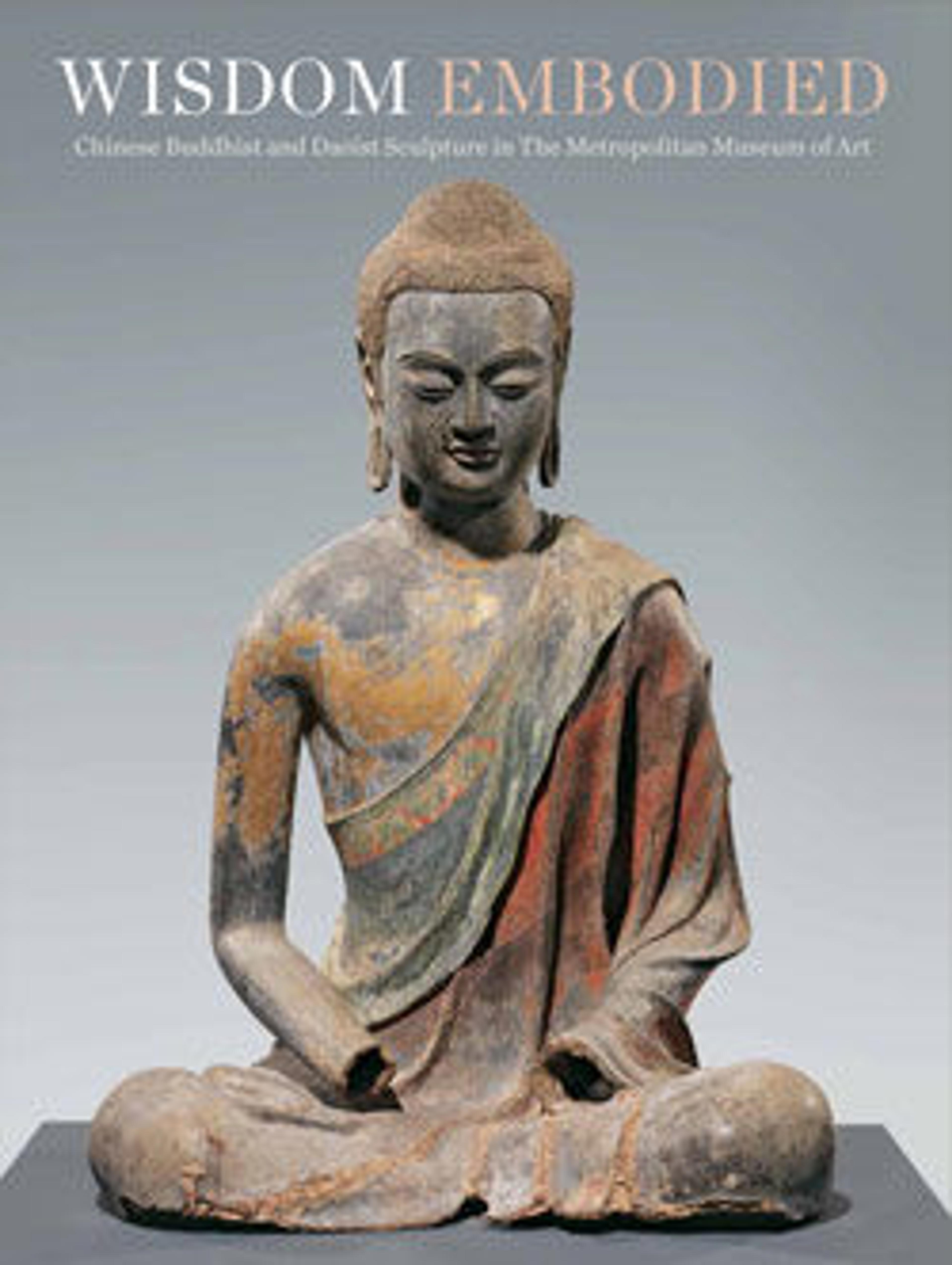Buddhist Deity, Ushnishavijaya (Zun Sheng fo mu)
This eight-armed goddess can be identified by the implements she holds as Ushnishavijaya, one of several female deities who began to play a prominent role in Indian Buddhist practices during the seventh and eighth centuries. She has three faces and is thought to personify the ushnisha, the cranial protuberance that marks a Buddha. Therefore, she is generally associated with the development of practices focusing on spiritual understanding. The goddess holds a small seated Buddha in her upper right hand and a two-pronged vajra suspended from a long rope in her upper left. Her second pair of hands holds a bow and arrow, while the third clutches a four-pronged vajra (a ritual implement symbolic of adamantine power) before her chest. The seventh and eighth hands, the lowest pair on the sculpture, offer a gesture of beneficence and hold a covered vase. The style of the sculpture reflects the close ties between the Buddhist cultures of Tibet, Mongolia, and China during the Qing dynasty.
Artwork Details
- 清 黃銅鎏金尊勝佛母像
- Title: Buddhist Deity, Ushnishavijaya (Zun Sheng fo mu)
- Period: Qing dynasty (1644–1911)
- Date: late 17th–18th century
- Culture: China
- Medium: Gilt brass; lost-wax cast
- Dimensions: H. 7 in. (17.8 cm); W. 4 3/4 in. (12.1 cm); D. 3 3/4 in. (9.5 cm)
- Classification: Sculpture
- Credit Line: Purchase, Friends of Asian Art Gifts, 2007
- Object Number: 2007.75a, b
- Curatorial Department: Asian Art
More Artwork
Research Resources
The Met provides unparalleled resources for research and welcomes an international community of students and scholars. The Met's Open Access API is where creators and researchers can connect to the The Met collection. Open Access data and public domain images are available for unrestricted commercial and noncommercial use without permission or fee.
To request images under copyright and other restrictions, please use this Image Request form.
Feedback
We continue to research and examine historical and cultural context for objects in The Met collection. If you have comments or questions about this object record, please contact us using the form below. The Museum looks forward to receiving your comments.
